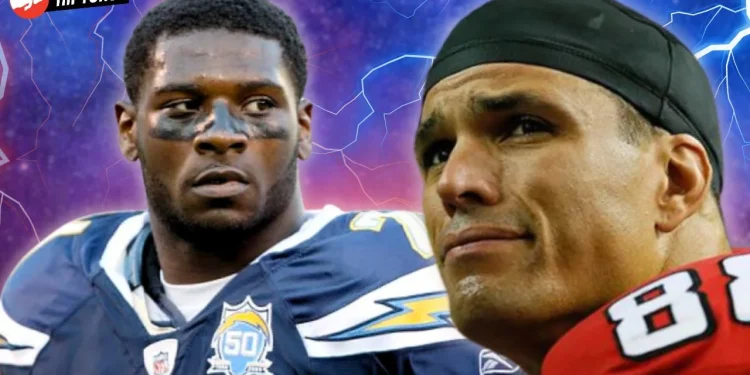The Super Bowl is the ultimate achievement in the National Football League (NFL), symbolizing the pinnacle of success and team accomplishment. However, throughout the history of the NFL, numerous outstanding players have never had the opportunity to hoist the Lombardi Trophy. Despite their achievements and crucial contributions to the game, these athletes ended their careers without the crowning glory of a Super Bowl victory. This article highlights the top 10 NFL players who, despite their immense talent and significant impact on the sport, never clinched a Super Bowl win.
Here are the Top 10 NFL Players Who Never Won a Super Bowl
1. Dan Marino: The Unfulfilled Super Bowl Dream

Dan Marino’s NFL career remains one of the most impressive in the history of the sport, especially when one considers individual achievements and quarterback records. Starting his professional journey with the Miami Dolphins in 1983, Marino quickly established himself as a force to be reckoned with, setting rookie records that heralded the arrival of a new quarterbacking talent. His quick release and powerful arm allowed him to dominate the league, fundamentally changing how the quarterback position was played in the era.
Despite his meteoric rise, Marino’s Super Bowl aspirations were continually thwarted. His only appearance in the championship game came during his second season in 1984 when the Dolphins faced off against the San Francisco 49ers in Super Bowl XIX. The game, filled with high expectations for a showdown between Marino and Joe Montana, ended in disappointment for Marino as the Dolphins were decisively beaten 38-16. This game highlighted the peak of Marino’s career in terms of team success but also marked the beginning of ongoing postseason frustrations.
Throughout the rest of his career, Marino would achieve numerous milestones, including becoming the quickest to reach 100 career touchdown passes, the first to throw for over 5,000 yards in a season, and ending his career with what was then an NFL record 420 touchdown passes. Despite these personal successes, Marino’s Dolphins rarely made deep playoff runs, often hindered by a lack of a strong supporting cast, particularly in the running game and defense. This imbalance in team composition starkly highlighted Marino’s role as a singular talent on teams that lacked overall championship-caliber quality.
Marino’s story is a poignant chapter in NFL history, embodying the truth that football while hinging significantly on individual brilliance, is ultimately a team sport where success is dependent on many factors beyond a single player’s control. His career remains a testament to extraordinary talent and a reminder of the elusive nature of championship success in the competitive arena of the NFL.
2. Barry Sanders: Electrifying Talent without Championship Glory
Barry Sanders, arguably one of the most gifted running backs ever to grace the NFL, had a career that was as spectacular as it was bittersweet. Drafted by the Detroit Lions in 1989 out of Oklahoma State University, where he had won the Heisman Trophy, Sanders entered the league with expectations sky-high—and he did not disappoint. From the outset, Sanders’ playing style was a blend of agility, speed, and unpredictability, making him nearly impossible to tackle and a constant threat on the field.
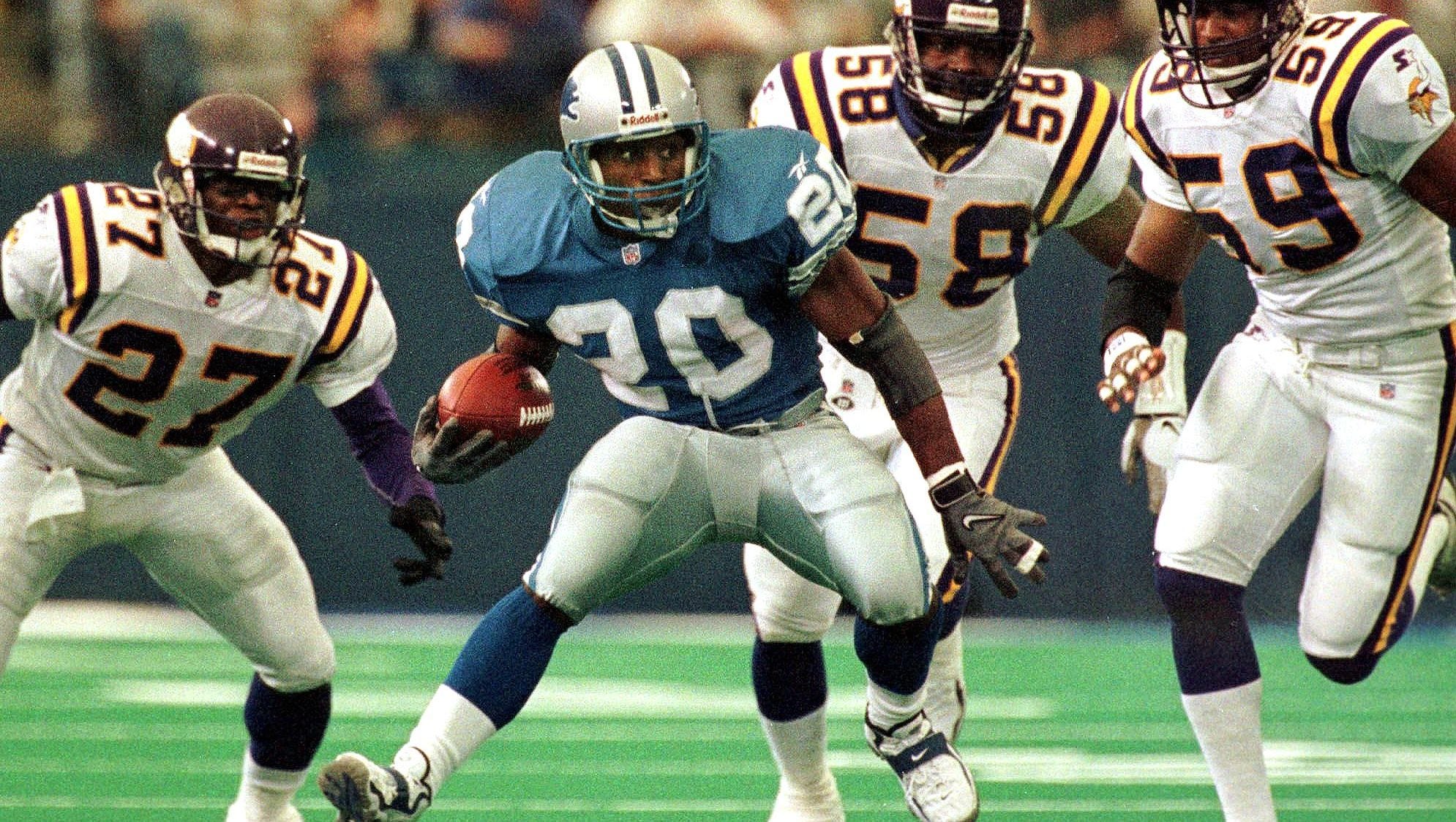
Throughout his ten-season career, Sanders amassed 15,269 rushing yards, ranking him among the top rushers in NFL history. His ability to make sharp cuts and break long runs electrified fans and dumbfounded defenders. In 1997, he co-won the NFL MVP after rushing for over 2,000 yards in a single season, a feat accomplished by only a few players in league history. Despite his success and racking up ten consecutive Pro Bowl appearances, Sanders’ brilliance was often overshadowed by the Lions’ overall lack of postseason success.
The Lions made the playoffs five times with Sanders but only won a single playoff game in 1991. They never advanced beyond the NFC Championship game, and more often than not, Sanders found himself on teams that struggled to support his talent effectively. The Lions’ inability to build a consistent contender around him is widely viewed as a significant reason why such a talented player never reached a Super Bowl.
Barry Sanders’ retirement came unexpectedly and early, at the age of 30, just before the 1999 NFL season. His decision stunned the sports world as he was still in prime form and nearing Walter Payton’s then-all-time rushing record. In retirement, Sanders cited the wear and tear of football and his desire for a life beyond the sport as reasons for stepping away, though many speculated that the chronic losing and lack of commitment to building a winning team around him played significant roles in his decision.
Sanders’ legacy in the NFL is complex—celebrated for his extraordinary talents and unique style but also a tale of unfulfilled potential in the context of team success. His career remains a fascinating case study in the dynamics of individual and team achievements in professional sports.
3. Bruce Smith: A Defensive Titan Without a Crown
Bruce Smith, whose NFL career spanned 19 seasons, is synonymous with defensive excellence and quarterback terror. Drafted first overall by the Buffalo Bills in 1985, Smith would go on to redefine the defensive end position with his blend of size, speed, and technique. Over his illustrious career, Smith amassed 200 sacks, holding the record for the most career sacks—a testament to his durability and skill in disrupting opposing offenses.
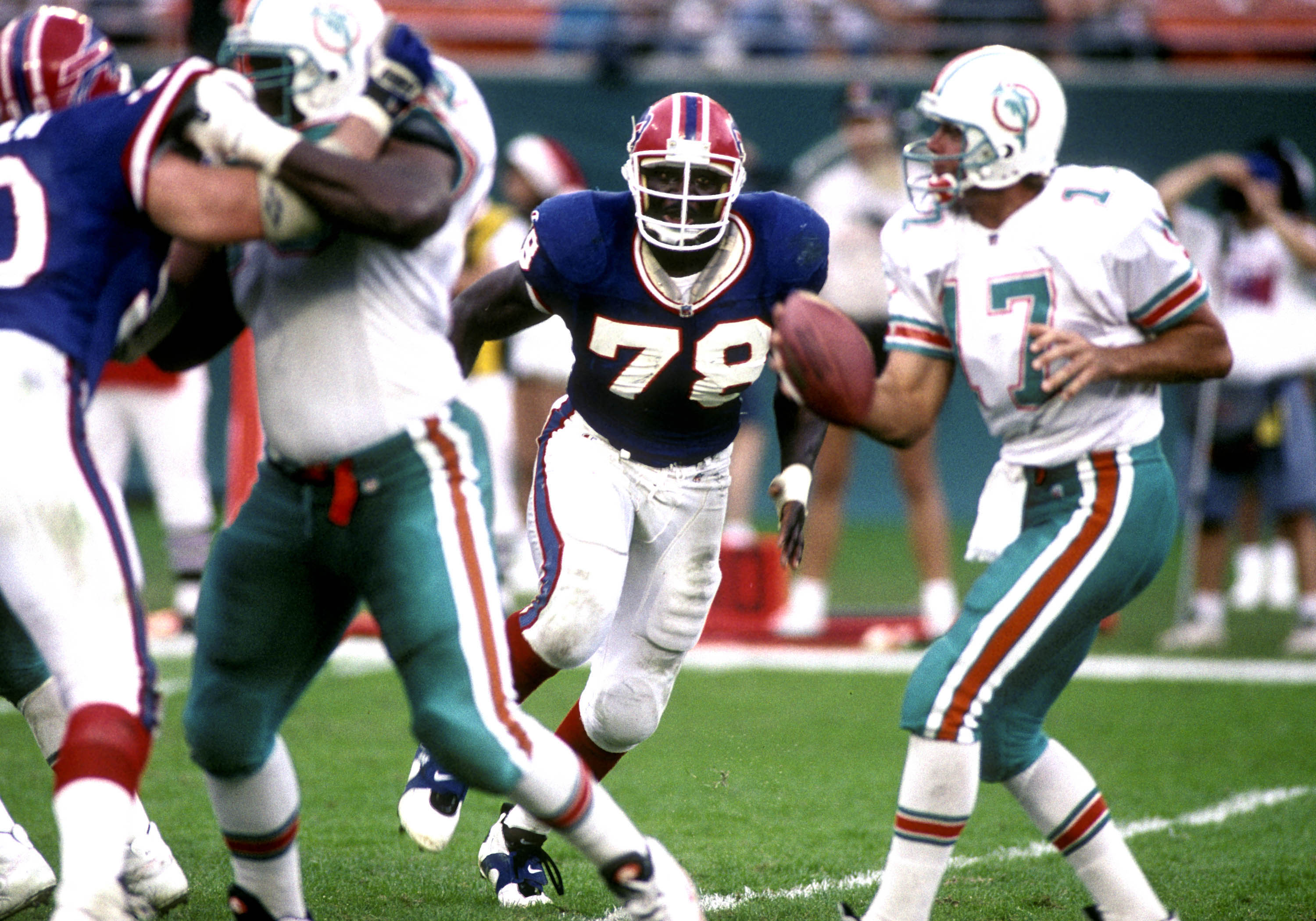
Smith’s dominance on the field was integral to the Buffalo Bills’ success during the late 1980s and early 1990s, a period when the Bills became perennial contenders. Unfortunately for Smith and the Bills, this era is also remembered for their record four consecutive Super Bowl appearances from 1990 to 1993, each of which ended in heartbreak. Smith played a critical role in these games, consistently applying pressure and proving a formidable force on the grandest stage. Yet, the elusive Super Bowl victory remained out of reach, with close calls like Scott Norwood’s infamous missed field goal in Super Bowl XXV adding to the agony.
Despite the Super Bowl disappointments, Smith’s accolades are numerous and distinguished. He was selected to 11 Pro Bowls, named First-Team All-Pro eight times, and earned two Defensive Player of the Year awards. His ability to perform in crucial moments, including a career-high 19 sacks in the 1990 season, underscored his impact and the respect he commanded from both teammates and opponents.
Smith’s playing style, characterized by a rare combination of power and agility, allowed him to overpower offensive linemen and evade double teams with surprising finesse. His training regimen and study of the game were well known, contributing to his longevity and effectiveness, even as he played into his late thirties. Smith’s tenure with the Bills concluded in 1999, after which he played four seasons with the Washington Redskins, continuing to perform at a high level before retiring after the 2003 season.
Smith’s career encapsulates the paradox of professional sports, where individual brilliance is not always accompanied by team success. Despite never winning a Super Bowl, Bruce Smith’s influence on and off the field continues to resonate, demonstrating that while championships define careers, greatness transcends them.
4. Dick Butkus: The Personification of Defensive Ferocity
Dick Butkus, whose career with the Chicago Bears spanned from 1965 to 1973, remains one of the most intimidating and fierce linebackers to ever play in the NFL. Renowned for his aggressive playing style and uncanny ability to disrupt the opposition’s game plan, Butkus became a symbol of toughness and tenacity in American football.

From the outset of his career after being drafted third overall, Butkus established himself as a dominant force on the defensive side of the ball. His approach to the game was characterized by a relentless pursuit of the ball carrier and a formidable presence that could single-handedly change the dynamics of a game. He was known for his ability to read opponents’ offenses and react with unmatched speed and aggression. This intuitive play, combined with his physical prowess, made him a terror for quarterbacks and running backs alike.
Throughout his nine seasons in the NFL—all with the Chicago Bears—Butkus was selected to eight Pro Bowls and was a five-time first-team All-Pro. His impact on games was profound, often seen in his numerous forced fumbles, interceptions, and his commanding leadership on the field. Butkus’s style of play was not just about physical dominance but also psychological; he was known for his ability to intimidate and unsettle opponents.
Despite his individual success and fearsome reputation, Butkus played during a period when the Bears struggled with overall team performance. They never reached the playoffs throughout his career, and Butkus’s efforts, though Herculean, were not enough to turn the team’s fortunes around. This lack of team success is often pointed out as a stark contrast to his achievements and is a poignant reminder of the challenges of team sports where even the most dominant individuals cannot achieve team victories alone.
The story of Dick Butkus is one of individual triumph, relentless dedication to the craft of football, and the harsh realities of professional sports, where even the greatest talents may not lead their teams to the ultimate success of a championship. His legacy as a player transcends the lack of playoff appearances, emphasizing the impact an individual can have on the game and culture of football.
5. LaDainian Tomlinson: A Legacy of Versatility and Grace
LaDainian Tomlinson, often simply known as “LT,” is remembered not only as one of the most versatile running backs in NFL history but also as a player who redefined what it meant to be an offensive weapon. Selected by the San Diego Chargers as the fifth overall pick in the 2001 NFL Draft, Tomlinson’s career spanned 11 seasons, predominantly with the Chargers before concluding with the New York Jets.
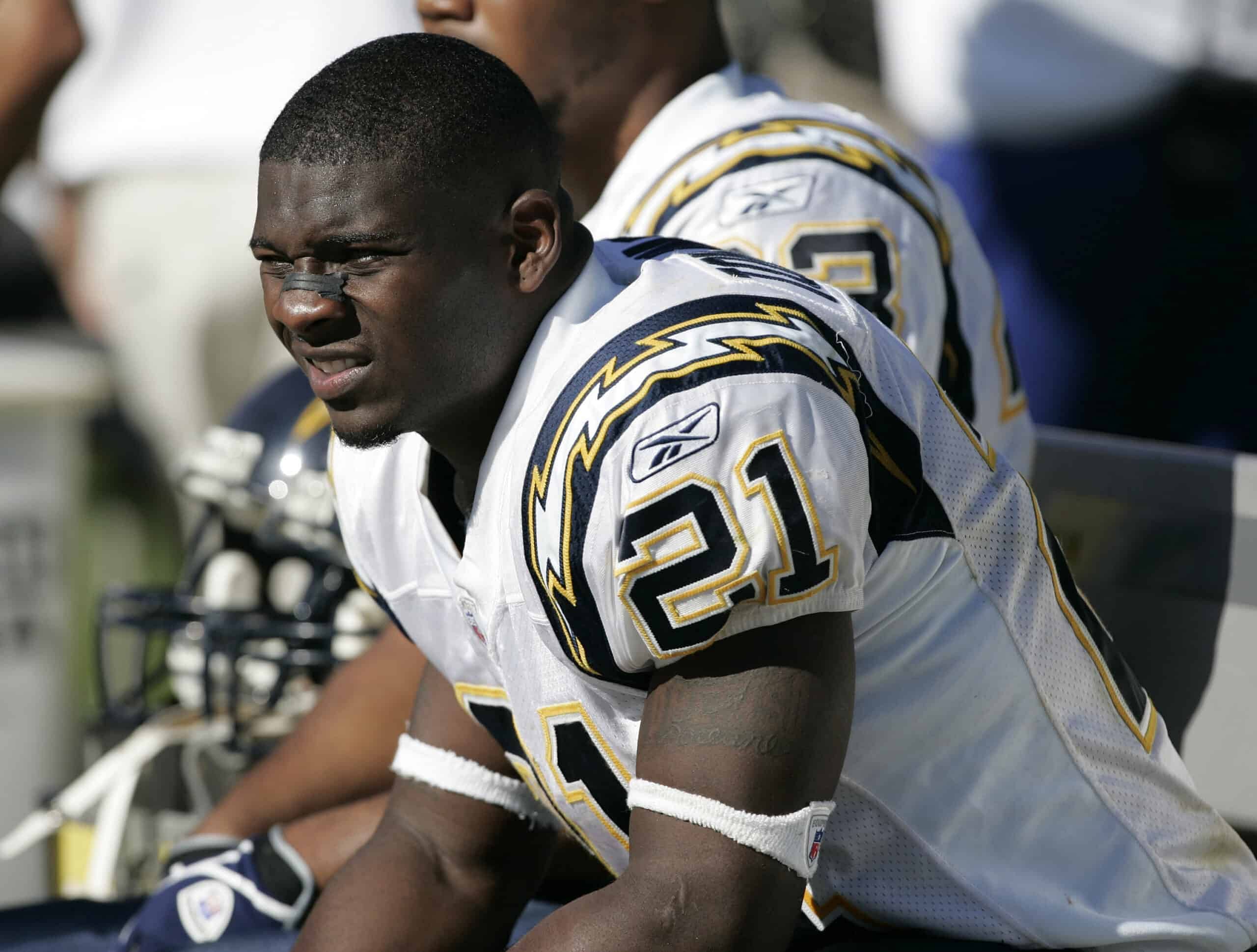
Tomlinson’s impact was immediate and profound. With a blend of quickness, power, and exceptional catching ability out of the backfield, he quickly became the cornerstone of the Chargers’ offense. His skill set allowed him to excel in both running and passing plays, making him a dual threat every time he stepped on the field. In 2006, Tomlinson had a season for the ages when he set the single-season record for touchdowns with 31 (28 rushing, 3 receiving), earning him the MVP award. This achievement highlighted not only his skill but his role as a game-changer in the league.
Beyond his remarkable stats, Tomlinson was known for his leadership and sportsmanship. He was a model of consistency and professionalism, using his platform to inspire both teammates and fans. His career featured five Pro Bowl selections and six All-Pro nominations, underscoring his standing among the elite players in the league.
Despite his accolades, Tomlinson’s quest for a Super Bowl victory remained unfulfilled. The Chargers made the playoffs multiple times during his tenure but never advanced to the Super Bowl. Their closest run came in the 2007 season when they reached the AFC Championship Game but were defeated by the New England Patriots. This lack of team success in the postseason was a source of frustration for Tomlinson, as it was the one achievement that eluded him in an otherwise stellar career.
Tomlinson’s career is a testament to the fact that success in the NFL is not solely measured by championships but also by the respect and inspiration one instills in others. His journey through professional football showcases the profound impact one individual can have on a team, community, and the sport as a whole.
6. Randy Moss: A Spectacular Career Defined by Game-Changing Plays
Randy Moss, one of the most dynamic and talented wide receivers in NFL history, is renowned for his incredible athleticism, speed, and ability to make seemingly impossible catches. Drafted by the Minnesota Vikings in 1998, Moss made an immediate impact in the league, setting the rookie record for most touchdown receptions in a season—a record that announced his arrival on the professional stage and set the tone for a storied career.
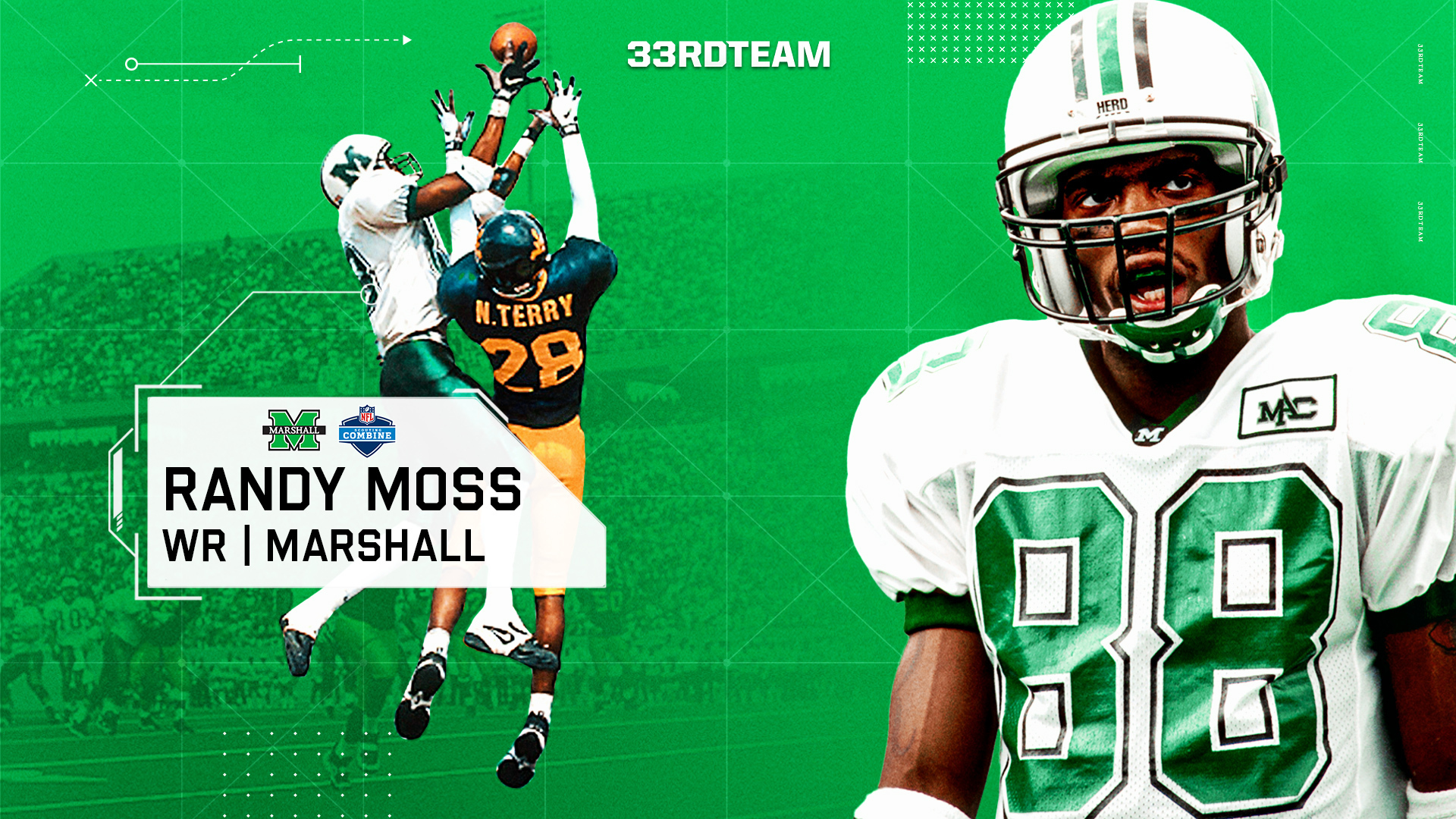
Moss’s ability to “go get the ball” made him a nightmare for defenses. His playing style, characterized by the phrase “You got Mossed,” became synonymous with dominating aerial displays over defenders. Throughout his career, Moss was a pivotal figure in every offense he was part of, known for stretching the field and changing the dynamics of defensive play against his teams.
His most statistically impressive season came in 2007 with the New England Patriots, where he caught a record-breaking 23 touchdown passes from Tom Brady. This season was part of a historic run that saw the Patriots reach the Super Bowl with an undefeated 16-0 regular-season record. However, Moss’s quest for a Super Bowl ring ended in disappointment as the Patriots were upset by the New York Giants in one of the most dramatic Super Bowl finishes ever.
Despite this setback, Moss continued to excel on the field. His career spanned several teams, including stints with the Oakland Raiders, a return to the Minnesota Vikings, the Tennessee Titans, and the San Francisco 49ers. Each time, Moss brought a new energy and threat to the offenses he joined. His career accomplishments include being a six-time Pro Bowl selection and four-time First-Team All-Pro, highlighting his influence and success as a receiver.
Randy Moss’s NFL journey encapsulates the blend of individual brilliance and the elusive nature of team success in sports. His career, filled with spectacular highs and poignant what-ifs, remains a captivating chapter in NFL history, showcasing both the potential and the unpredictability of a career in professional football.
7. Tony Gonzalez: Redefining the Tight End Position
Tony Gonzalez, widely considered one of the greatest tight ends in NFL history, had a career that not only set records but also redefined how the tight end position was perceived and utilized in professional football. Drafted by the Kansas City Chiefs in 1997, Gonzalez’s blend of size, athleticism, and skilled hands made him an immediate asset to his team and a disruptive force for opposing defenses.

Over his 17-season career, split between the Kansas City Chiefs and the Atlanta Falcons, Gonzalez became the prototype for modern tight ends, combining the traditional blocking duties of the position with the skills of a wide receiver. This dual-threat capability allowed him to dominate the middle of the field, making crucial catches and becoming a reliable target in tight situations.
Gonzalez’s stats are a testament to his durability and skill: he retired holding NFL records for career receiving yards (15,127), receptions (1,325), and touchdown receptions (111) by a tight end, each mark underscoring his consistency and impact. His 14 Pro Bowl selections and 10 All-Pro nods further illustrate his standing among the elite.
Despite his success, Gonzalez’s pursuit of a Super Bowl ring remained unfulfilled. The closest he came was during the 2012 season with the Atlanta Falcons when the team reached the NFC Championship game. In a heartbreaking loss to the San Francisco 49ers, the Falcons fell just short of the Super Bowl, and with it, Gonzalez’s best chance at a championship slipped away. He retired after the 2013 season, leaving behind a legacy of greatness that was slightly marred by this absence of ultimate team success.
Tony Gonzalez’s career narrative is a compelling story of individual brilliance, professional evolution, and the elusive nature of team success in the NFL. His legacy in the sport is defined by his transformative impact on the tight-end role and his profound contributions to the teams for which he played.
8. Earl Campbell: The Powerhouse of the Gridiron
Earl Campbell’s NFL career, characterized by his extraordinary power and aggressive running style, marked him as one of the most formidable running backs in the history of the league. Selected first overall by the Houston Oilers in the 1978 NFL Draft, Campbell quickly established himself as a dominant force, earning the Offensive Rookie of the Year award and setting the tone for what would be a legendary career.

From the outset, Campbell’s ability to combine speed and power was unmatched. His style was quintessentially physical, often bulldozing through defenders with sheer force, which not only gained him yards and touchdowns but also the respect and fear of his opponents. His presence on the field was a critical factor in the Oilers’ success during the late 1970s and early 1980s, including consecutive appearances in the AFC Championship Games in 1978 and 1979. Despite these promising campaigns, Campbell and the Oilers could not advance to the Super Bowl, largely due to the dominant Pittsburgh Steelers of that era.
Campbell’s career achievements are numerous. He led the NFL in rushing yards for three consecutive years from 1978 to 1980, was named the NFL’s Most Valuable Player in 1979, and earned five Pro Bowl selections. His aggressive running style, however, took a toll on his body. The physical demands of his play style led to multiple injuries, which ultimately shortened his career. Campbell retired during the 1985 season, his legacy partly defined by what many consider a premature end to a meteoric career.
Reflecting on Earl Campbell’s career brings into focus the blend of awe-inspiring talent and the physical sacrifices made by professional athletes. His time in the NFL, although marked by individual brilliance, also tells the story of unfulfilled team potential and the personal costs of sporting excellence. Campbell remains a symbol of the power and passion of football, a player whose style and heart redefined what it meant to be a running back.
9. Eric Dickerson: Master of the Ground Game
Eric Dickerson, with his distinctive upright running style and exceptional speed, dominated the NFL as one of the most prolific running backs during the 1980s. Selected second overall in the 1983 NFL Draft by the Los Angeles Rams, Dickerson made an immediate impact, setting the rookie record for most rushing yards in a season—a sign of the incredible achievements that would define his career.

Dickerson’s name is synonymous with the 1984 season, during which he set the single-season rushing record of 2,105 yards—a record that still stands as a testament to his ability and endurance. This feat was accomplished thanks to his unique combination of size, speed, and vision, allowing him to find and exploit openings that many other backs could not. His performances during this period not only dazzled fans and analysts but also reshaped expectations for what a running back could achieve in the NFL.
Throughout his career, Dickerson played for several teams, including the Indianapolis Colts, Los Angeles Raiders, and Atlanta Falcons, in addition to his iconic tenure with the Rams. Despite his success and the impact he had on each team’s offense, Dickerson’s teams often struggled to find postseason success. His most significant playoff contributions came during his time with the Rams and later with the Colts, but a Super Bowl appearance eluded him throughout his career.
Reflecting on Eric Dickerson’s career offers a vivid portrait of an athlete whose performances could captivate audiences and change games single-handedly. His career is a compelling narrative about the challenges and triumphs of professional sports, emphasizing that individual greatness, while spectacular, is often just one part of the broader team endeavor in pursuit of championship success.
10. Fran Tarkenton: The Scrambling Quarterback Pioneer
Fran Tarkenton, known for his exceptional mobility and improvisational skills, redefined the quarterback position during his illustrious NFL career. Drafted by the Minnesota Vikings in 1961, Tarkenton brought a new dimension to the quarterback role with his ability to evade defenders and extend plays with his legs, earning him the nickname “The Scrambler.”

Tarkenton’s career spanned 18 seasons, during which he played for the Minnesota Vikings and the New York Giants. His ability to scramble not only made him a formidable opponent but also transformed the strategies employed by defenses trying to contain him. Tarkenton wasn’t just a mobile quarterback; he was also highly effective from the pocket, known for his sharp intellect and precise passing.
Throughout his career, Tarkenton amassed numerous accolades and records. He retired holding every major quarterback record, including most career touchdown passes, completions, and yards thrown, though these records have since been broken. Tarkenton’s style of play paved the way for future generations of mobile quarterbacks, showing that mobility could be an integral part of a quarterback’s skill set, not just a last resort.
Despite his success, the ultimate team accolade—a Super Bowl victory—eluded Tarkenton. He led the Vikings to three Super Bowl appearances in the 1970s (Super Bowls VIII, IX, and XI), but they were defeated each time. These losses were particularly disappointing given the Vikings’ dominance during the regular seasons leading up to these championships, often fueled by Tarkenton’s dynamic play.
Tarkenton was selected to nine Pro Bowls and was a First-Team All-Pro selection once. His induction into the Pro Football Hall of Fame in 1986 was a testament to his impact on the game and his innovative approach to the quarterback position. His career left an indelible mark on the NFL, influencing both the tactics used by coaches and the play styles of future quarterbacks.
Tarkenton’s story is not just about the records or the games won but about changing the game of football itself. His career encourages a broader understanding of success in sports, highlighting the transformative impact one player can have on a team’s identity and style of play.


